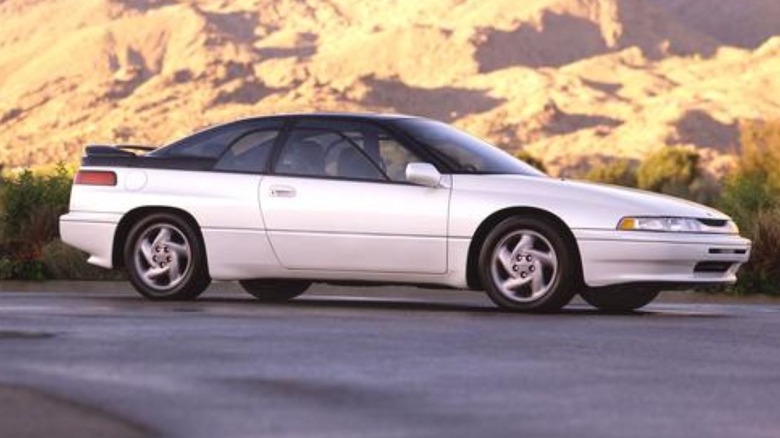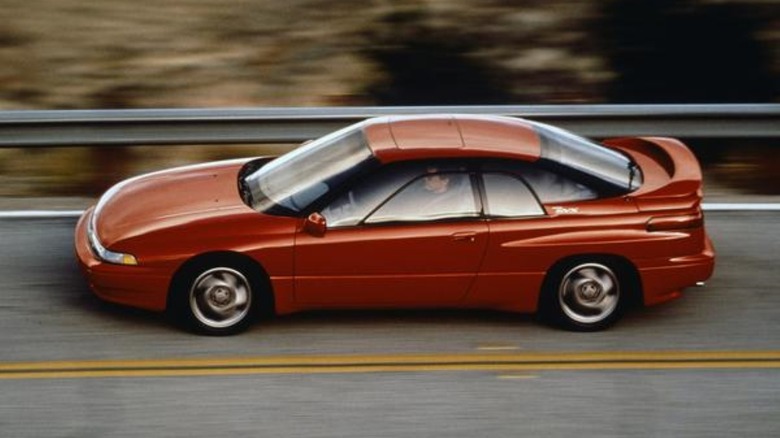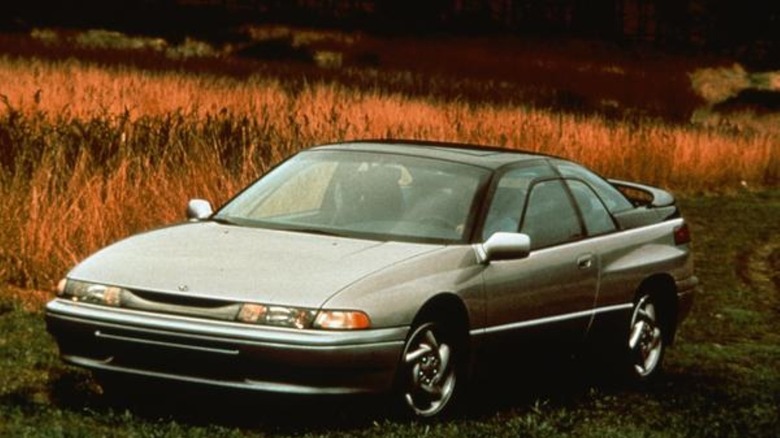Why The Subaru SVX Was A Complete Flop
In 2022, if you want a more performance-minded Subaru, your choices are the Subaru BRZ and Subaru WRX GT. If you want a refined ride without looking like an anime character headed to the World Rally Championship, you're unfortunately out of luck. But that was not always the case. For a brief time in the 1990s, Subaru offered a sleek grand tourer that sat miles above every other Subaru offered at the time, not only in style, but also in price.
That car was the Subaru SVX. It was produced from 1992 to 1997, and was, to date, Subaru's only real luxury-focused car. You'd think that would be a winning combination. Subaru is no doubt an incredibly popular brand with a loyal following. The WRX STI proved Subaru knew how to make a performance car. Add in a few daring styling cues and you have a blockbuster GT car. Unfortunately, the SVX was a complete failure.
Unlike any other Subaru
A vehicle's market demise can be blamed on a number of factors — ugly design, poor business decisions, or mechanical ineptitude. The Subaru SVX breaks that trend in the world of automotive failure because it was a well-regarded vehicle. It looked absolutely nothing like other Subarus, and it was intended to be a luxury car, while other models like the Legacy and Impreza were designed for capability and adventure.
Stylistically the SVX has more in common than a European sportscar than most Subarus. It was designed by legendary Italian designer Giorgetto Giugiaro, who is known for not only several different Maserati and Ferrari designs, but the original Volkswagen Golf and the DMC DeLorean. According to Subaru, its bizarre windows were designed in such a way that they didn't make any noise when the windows were down. Mechanically, it wasn't entirely alien to Subaru's lineup. It was powered by a characteristically Subaru 3.3L flat-six "boxer" engine that put out a healthy 230 horsepower, and all but a few early models were all-wheel drive.
A Subie that broke the bank
The SVX wasn't perfect by any means. For starters, it was expensive. At an MSRP of nearly $36,000, it was significantly more expensive than any other Subaru at the time. Adjusted for inflation, that's nearly $68,000, which makes it pricier than every new Subaru in 2022. The SVX's automatic transmission was another weak spot. It was the only available gearbox because Subaru didn't have a manual transmission that could effectively put up with the SVX without liquifying itself (via MotorTrend).
A hefty price tag and somewhat weak transmission spelled sales disaster for Subaru. All told, the brand sold around 14,000 SVXs during its short life. Despite the relative rarity, surviving SVXs aren't auction queens. Well preserved models still roll across the auction block occasionally for pretty reasonable prices. If you couldn't afford the SVX in the 90s, nearly 30 years of depreciation might work in your favor.


